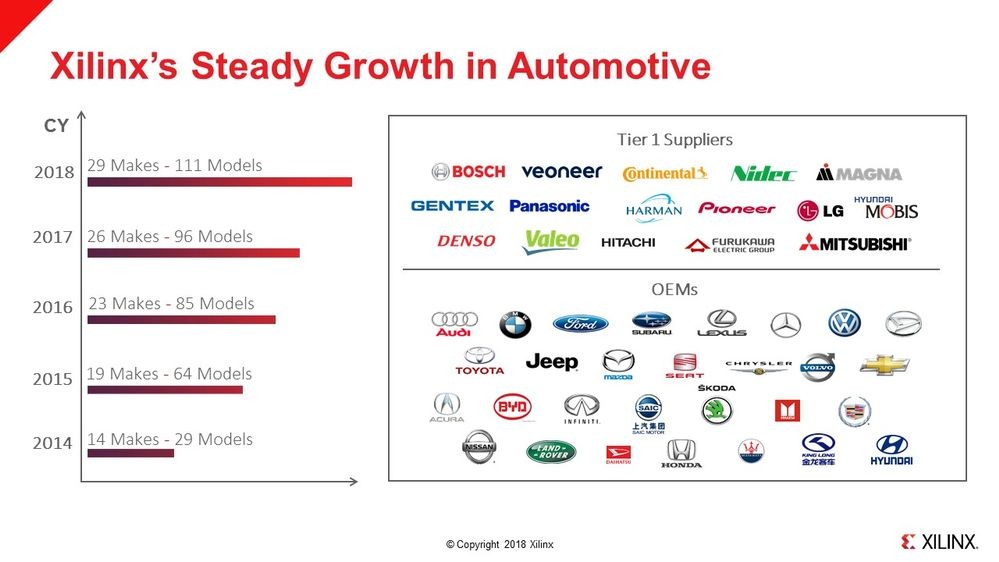Beep, Beep! The case for FPGAs for ADAS and Autonomous Driving
06-29-2018 12:19 PM
By Willard Tu, Xilinx Senior Director, Automotive
While we haven’t always been loudly honking our own car horn as we should, Xilinx has a strong pedigree in automotive. For more than 12 years, we’ve shipped over 40 million cumulative units to automakers and Tier 1 automotive suppliers. In the majority of recent deployments, Xilinx devices are being used by Tier 1s to provide processing power for the camera and sensor systems they are developing for advanced driver-assistance systems (ADAS) and autonomous vehicles.
But why FPGA for these systems? We get that question often, so I’ve pulled together a list of five key reasons why automakers and Tier 1s are choosing Xilinx FPGA-based technology for their camera- and sensor-based driving systems.
1 - Ability to easily customize and differentiate – ASICs and GPUs are one-size-fits-all solutions. Because of the programmable nature of FPGAs, automakers can customize their chips to run proprietary image-processing algorithms, for example, enabling features that differentiate their models from the competition. Do you want a driver-monitoring camera that tracks both the driver’s eyes and head position? No problem. And what happens if your imager changes from 4MP to 8MP? Again, not a problem because you’ll be readily able to customize.
2 - Open-box architecture – Other market solutions are effectively a “black box,” which doesn’t enable a Tier 1 or OEM to know what other capabilities are inside of it. With Xilinx technology, automotive OEMs see exactly what they get, and can customize their system to meet changing regulatory conditions, compliance with functional safety standards, etc. Automotive OEMs tell us they need to know what they are getting. The black-box design keeps them in the dark on this.
3 - Ability to position anywhere – The FPGA architecture is inherently thermally efficient, enabling OEMs to locate the devices anywhere in or on the vehicle: inside of the ADAS central processing unit, inside of the car or even on the windshield. It doesn’t matter.
4 - Scalability – Since it is possible to readily re-program and add processing power to Xilinx’s SoCs, it is easy for a Tier 1 or OEM to scale their systems to meet needs for increased complexity, speed or capabilities. The architecture enables them to add more programmable fabrics as demanding by applications.
5 - Adaptability – The automotive industry today is moving quickly and imposing ever-changing requirements on automakers. For example, the European NCAP (New Car Assessment Programme) organization sets standards for safety—encompassing features like lane-keeping and auto-braking—that are updated every few months. Traditional chip architectures take one to two years to design and get to market (and even that is aggressive). OEMs and Tier 1s can adjust Xilinx devices on the fly, to meet changing needs.
We are proud of our steady growth in the automotive market, which is the result of these unique benefits of our flexible, programmable FPGA and SoC technology.
But the differentiators don’t stop with the five listed above. Watch this space for an upcoming post where we share two exciting, emerging automotive applications that are possible only with FPGA.
